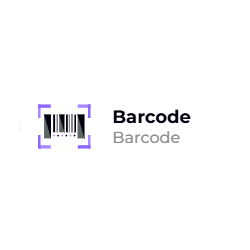Barcodes are an essential technology used across various industries, facilitating the tracking and management of products with ease. From retail to logistics, barcodes enhance efficiency by enabling quick and accurate data entry.
What is a Barcode?
A barcode is a machine-readable representation of data that consists of parallel lines of different widths and spaces. This visual code can be scanned and interpreted by barcode scanners, allowing businesses to handle inventory, pricing, and sales quickly.
Types of Barcodes
- 1D Barcodes: These are the traditional barcodes (like UPC and Code 39) made up of lines and spaces. They represent data in a linear format and are common in retail.
- 2D Barcodes: These include QR codes and Data Matrix codes, which can store more information than 1D barcodes. They can encode URLs, text, contact details, and much more, making them versatile for various applications.
Applications of Barcodes
- Retail: Barcodes streamline the checkout process by enabling quick scanning of products, reducing waiting times for customers, and improving inventory management.
- Logistics and Supply Chain: In warehouses, barcodes help track shipments and manage stock levels efficiently, ensuring that products are readily available when needed.
- Healthcare: Hospitals use barcodes for patient identification, medication management, and tracking medical equipment, enhancing safety and accuracy in patient care.
- Manufacturing: Barcodes assist in tracking parts and products throughout the production process, helping to minimize errors and maintain quality control.
- Library and Information Management: Barcodes simplify the process of tracking books and other resources, making it easier for libraries to manage their collections.
Benefits of Using Barcodes
- Increased Efficiency: Barcodes automate data entry, reducing the likelihood of human error and speeding up processes.
- Cost-Effective: Implementing barcode technology can lead to significant savings by improving inventory accuracy and reducing labor costs.
- Enhanced Data Collection: Barcodes enable businesses to collect and analyze data more effectively, providing insights that can drive better decision-making.
- Improved Customer Experience: Quick scanning at checkout and accurate inventory information lead to increased customer satisfaction.
How to Get Started with Barcodes
To implement barcode technology in your business, consider the following steps:
- Choose the Right Barcode Type: Determine which type of barcode suits your needs based on the information you want to encode and the environment in which it will be used.
- Select a Barcode Generator: Use a reliable barcode generator to create custom barcodes that meet your specifications.
- Invest in Scanning Equipment: Purchase or lease barcode scanners that can read the types of barcodes you’ve chosen to use.
- Train Your Team: Ensure your staff understands how to use the barcode system effectively, from scanning to inventory management.
- Monitor and Optimize: Continuously evaluate the effectiveness of your barcode system to make improvements as needed.
Conclusion
Barcodes are an invaluable tool for businesses looking to improve efficiency, reduce costs, and enhance data management. By embracing barcode technology, organizations can streamline their operations and provide better services to their customers.
To create your custom barcodes today, visit qrmts.com


